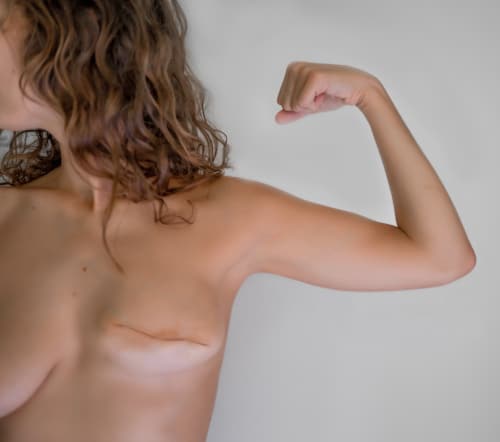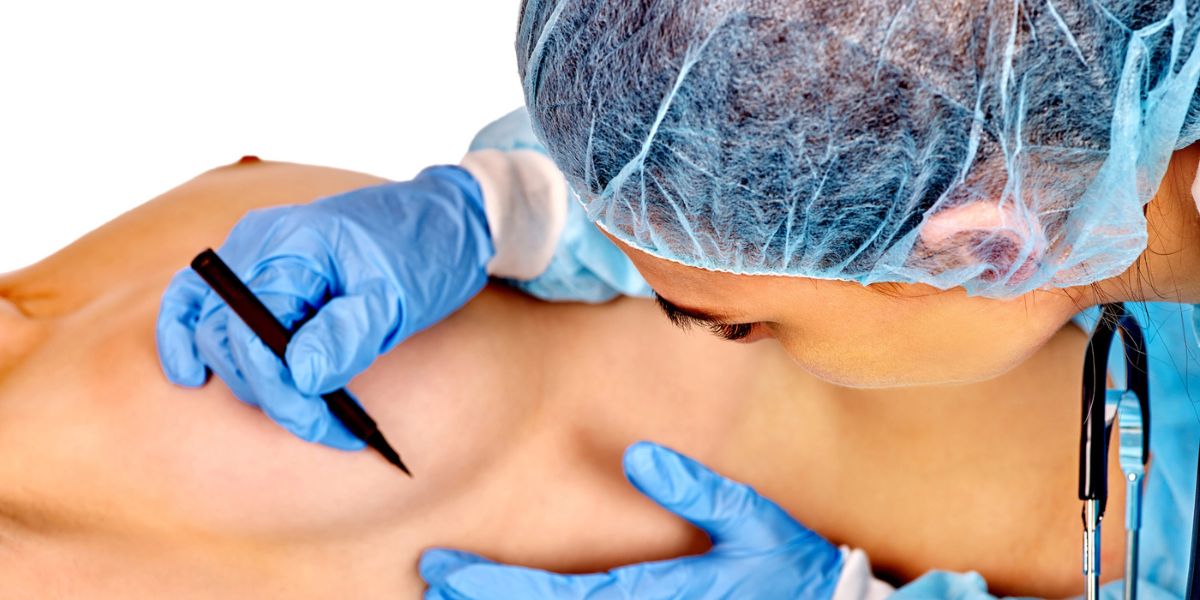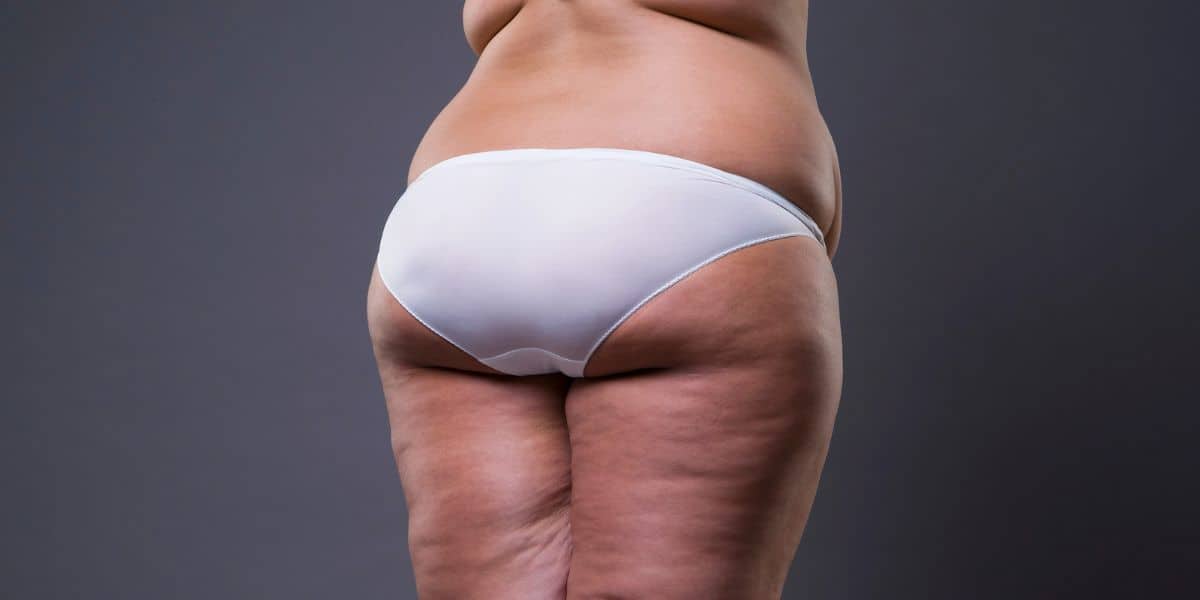Breast Reconstruction After Cancer
For many cancer survivors, breast reconstruction can provide an essential step in leaving cancer behind.
After all, a breast cancer diagnosis is often a life-changing one. The battle against this disease frequently starts with a mastectomy or a lumpectomy, a procedure that can leave deep physical and emotional scars. Sometimes, this is followed by extensive or invasive treatments, such as radiotherapy or chemotherapy.
Once the danger has passed, many patients seek to reclaim the life and body they left behind. As a result, breast reconstruction after cancer is one of the most impactful procedures that a plastic surgeon can perform. It can help heal a patient’s body image, their sexuality, and their sense of self following a devastating ordeal.

What is breast reconstruction after cancer?
Breast reconstruction surgery is any procedure meant to restore a patient’s breast shape, appearance, size, or symmetry. In plastic surgery, we generally perform these surgeries for a variety of reasons, including:
- Improving or correcting an unsatisfactory breast implant surgery.
- Reducing or lifting breasts after breastfeeding or breast fluctuations.
- Eliminating scars after removing an accessory nipple.
- Correcting gynecomastia, or excessive breast tissue in genetic males.
Among breast cancer patients, breast reconstruction surgeries are meant to restore the breast shape after a total mastectomy (the complete removal of a breast) or a lumpectomy (which only removes the tumor and the tissue immediately surrounding it).
How is breast reconstruction surgery done?
Depending on what was performed initially, breast reconstruction may involve anything from a small tug, which will make the breasts symmetrical again after a lumpectomy, to building a new breast mound completely or reconstructing the nipple.
As part of this process, breast surgeons may use a prosthesis, autologous tissue from elsewhere in the body, or a combination of both. In some cases, a breast reduction can also be done on the unaffected breast to bring them back to the same size. Then, they may adjust the location of the areola and the nipple.
In some cases, a complete nipple reconstruction may be necessary, which involves reshaping the skin into the shape of a nipple and tattooing specific areas to create a darker appearance.
The timing of the procedure will also influence the exact type of surgery. Sometimes, reconstruction can be performed immediately following the mastectomy. In others, waiting a few months or even years may be necessary. During delayed reconstruction procedures, healthcare practitioners must also account for any existing scar tissue or damage to the surrounding muscles or bones.
CALL (818) 770-7050 OR CLICK HERE TO SCHEDULE ONLINE
Breast reconstruction options after a mastectomy
Whenever possible, most surgeons recommend that women think about their reconstruction before the original mastectomy. But ultimately, the types of breast reconstruction available to each woman will depend on two separate decisions.
First, she will need to decide on when to have the reconstruction. In some cases, the process of reconstructing the breast can start immediately after removing the original one (immediate reconstruction). In others, it may be necessary to wait until a woman is cancer-free or has completed her treatments (a delayed reconstruction).
Next, she will need to choose between implants or a “flap” made from her tissue.
Neither of these decisions can be made in a vacuum. The patient and her oncological team will need to consider the size, location, and type of the original tumor, as well as the patient’s overall health status.
Timing of breast reconstruction
Over the past two decades, there’s been a steady increase in the number of women choosing an immediate reconstruction. Why?
- It offers more natural results.
- It lowers some of the psychological impact of a total mastectomy.
- It allows us to skip an extra surgery in the future, lowering the risks of anesthesia and recovery.
- The total cost is likely to be lower.
Most surgeons perform mastectomies using a “skin-sparing” technique for immediate reconstructions. This technique allows doctors to save most of the patient’s breast skin, including the nipple. The tissue can then be used during the reconstruction, and the final result will likely look more natural.
Furthermore, thanks to the current advances in cancer detection, an immediate reconstruction won’t affect a mammogram’s ability to detect a recurring cancer or to treat it.
Unfortunately, not all women are good candidates for an immediate reconstruction. In particular, women who may need radiotherapy are often advised to wait: radiation therapy can affect wound healing, which could keep the reconstruction scars from healing properly or increase the risk of infection.
In addition, an immediate reconstruction often demands quick and complex decisions at a time when a patient’s priorities are naturally focused on the cancer. Pushing the reconstruction to “later” (for example, after completing all breast cancer treatments or achieving remission) can help the ordeal feel less daunting.
In these cases, breast reconstruction procedures often have a deeper psychological impact, as they represent leaving the disease behind.
Using breast implants to reconstruct the breast
Generally, we think of breast implants in the context of simple breast augmentation procedures. To do this, plastic surgeons use saline or silicone implants, which are inserted either behind or in front of the chest wall muscles. Some patients need minor adjustments or lifts around the nipple, but most of the original breast tissue remains untouched.
On the other hand, inserting implants after breast cancer surgery can be remarkably more difficult, especially following a total mastectomy (which removes the entire breast). In most cases, the surgery needs to be done in three stages:
- The first stage, which can be done during the original mastectomy, involves inserting a small tissue expander right on top of the pectoralis muscle and under the skin. The expander will ensure there’s space for the breast after healing.
- In the following weeks, the tissue expander is gradually filled with silicone or saline. This allows the skin to stretch out slowly as it heals.
- The third stage requires a second surgery to remove the expander and insert the final implant, which may be made of saline or silicone gel.
Types of autologous breast reconstruction
Also known as flap reconstruction, autologous breast reconstruction involves using tissues from another part of the body to build the reconstructed breast.
There are several techniques currently available for doing this. They all begin with extracting a “flap”—essentially, a chunk of tissues combining fat cells, blood vessels, and skin—from somewhere else in the body.
Depending on the original size of the breasts and the patient’s body shape, the flap can be extracted from the abdomen, the back, the thighs, or even the buttocks. Either way, patients can expect a scar and some loss of sensation in the area surrounding the donor site.
In addition, the flap can be pedicled – when the entire flap is moved through the body without interrupting its blood supply – or free, which means it is completely cut off and then reattached to the body using microsurgery.
Combined, this creates a handful of different flap procedures available:
- The TRAM (Transverse Rectus Abdominis Myocutaneous) flap: This takes fat, skin, and part of the rectus abdominis muscle to reconstruct a natural-looking breast. However, it leaves a large scar on the abdomen and may decrease abdominal strength.
- The DIEP (Deep inferior epigastric perforator) flap: This is a free flap taken from the lower abdomen. It involves only skin, fat cells, and blood vessels, leaves a smaller scar than the TRAM flap, and preserves abdominal muscles. However, it requires a more complex and lengthy procedure and usually involves a second surgeon.
- The Latissimus Dorsi Muscle flap: This procedure utilizes a piece of muscle from the back, along with the adjacent skin and fat cells. It provides a natural result, with a smaller scar than the TRAM or DIEP flaps, but it can only recreate a smaller breast size.
- The SIEA (Superficial Inferior Epigastric Artery) flap: Similar to the DIEP, this procedure uses skin and fat from the abdominal area. However, it uses more superficial blood vessels, which protect the surrounding muscles, as long as the woman’s blood vessels are large enough.
Women who have had abdominal surgeries before or who have smaller abdomens are not good candidates for the procedures mentioned above. In these cases, surgeons can use a tissue flap from the thigh or buttocks area or combine a flap with a smaller implant.
CALL (818) 770-7050 OR CLICK HERE TO SCHEDULE ONLINE
Risks of breast reconstruction surgery
All surgeries carry some degree of risk, and when we’re dealing with patients who are already ill or who are about to undergo severe treatments with complex side effects, we need to be especially cautious.
Some risks are common among all types of reconstruction procedures. These include any complications from anesthesia, as well as bleeding, bruising, blood clots, and fluid collection in the surgical area.
Furthermore, infections and problems with wound healing can be particularly tricky for cancer patients. Many breast cancer treatments can temporarily lower immunity or blood clotting, making infections harder to treat.
In addition, some complications are specific to some types of reconstruction surgery:
Breast implants may – very rarely – cause capsular contracture, which is when the skin around the implants tightens and hardens.
Following an autologous reconstruction, there’s a slight chance that the fat grafting or flaps don’t “take” properly. In extremely rare cases, this can cause tissue necrosis, which is very dangerous.
Sometimes, women may lose sensation in the part of the body where the flap comes from.
SIEA flap procedures carry a higher risk of blood clots than other types of flap surgeries
Breast reconstruction after cancer surgery is complex, and Dr Saber understands
Dr. Sepideh Saber, MD, FACS, offers a more sensitive female healthcare perspective for patients of all ages, genders, and orientations. Her approach combines state-of-the-art techniques, deep alliances with fellow healthcare professionals, and a big emphasis on the impact of self-image on overall health. This helps her provide patients from all walks of life with a fresh start, even after devastating diseases.
A plastic and reconstructive surgeon, Dr. Saber earned her medical degree from Stanford University’s world-renowned medical school. She did her reconstruction and plastic general surgery residency at the University of Southern California (LAC + USC Medical Center and the Keck School of Medicine), then completed a fellowship at New York University (NYU) in the Division of Plastic and Reconstructive Surgery in the extremely challenging and delicate area of hand surgery and microsurgery. She also did her clinical research in the Department of Surgery at Stanford Medical School.
To request a consultation, call (877) 205-4100 or click here to schedule a consultation online.
The Valley Institute of Hand & Reconstructive Surgery, along with Dr. Saber, is located in Encino, CA, serving patients throughout the Los Angeles County area. We are also convenient to Encino, Woodland Hills, Sherman Oaks, Calabasas, Burbank, Glendale, Hidden Hills, Agoura Hills, Northridge, North Hollywood, Malibu, Topanga, Canoga Park, Reseda, Valley Glen, Chatsworth, West Hills, Winnetka, Universal City, Bel Air, Beverly Hills, Westwood, Downtown Los Angeles, Silverlake, and Echo Park.

















